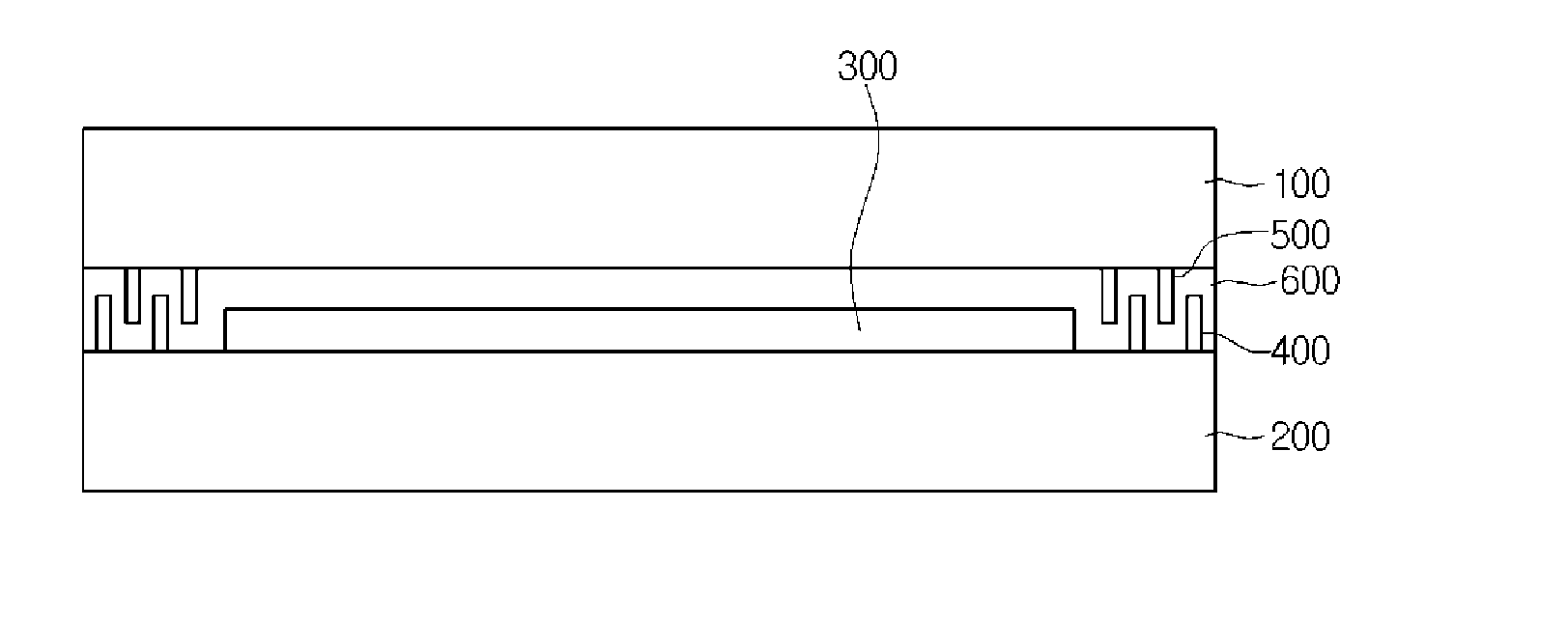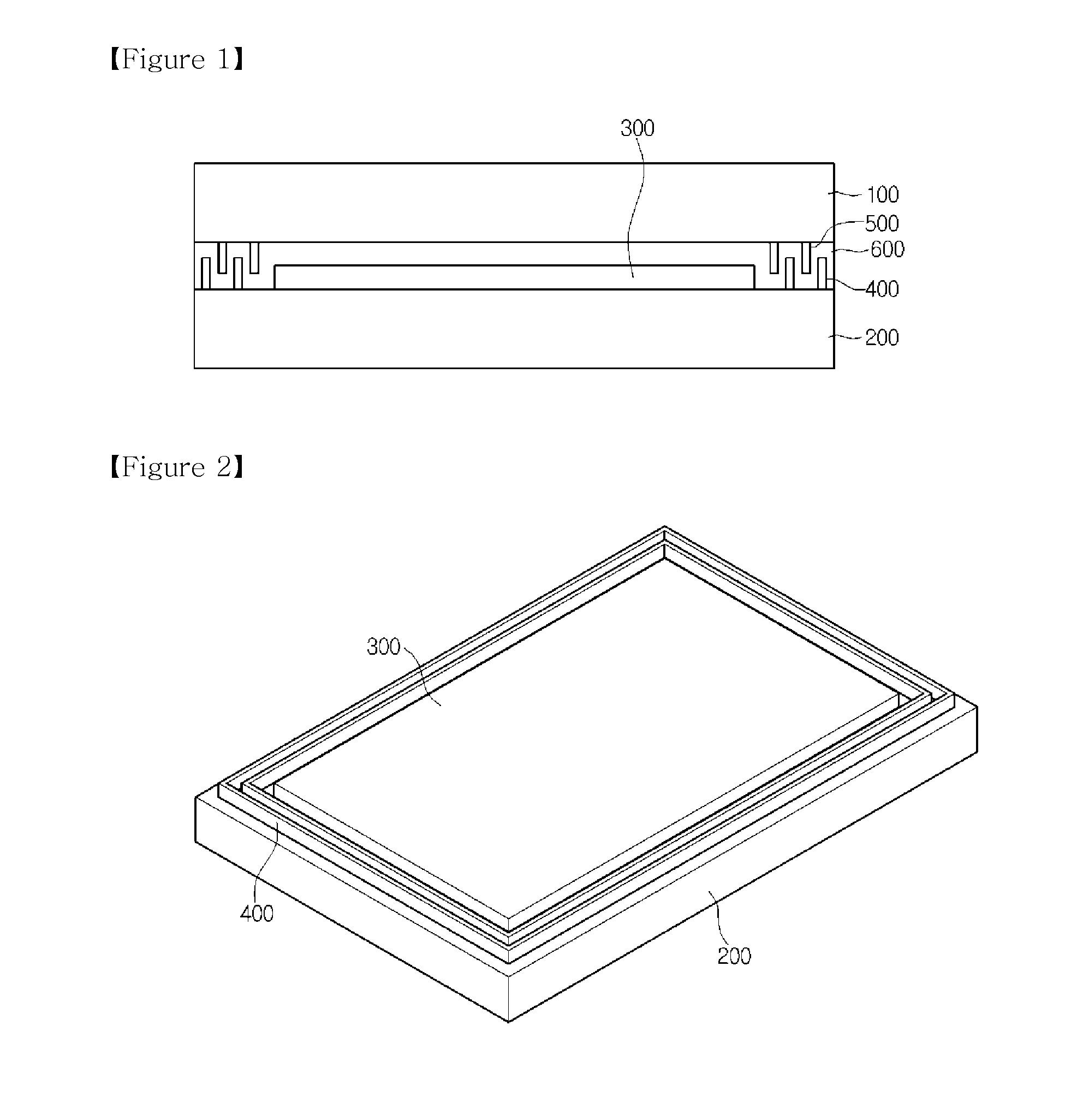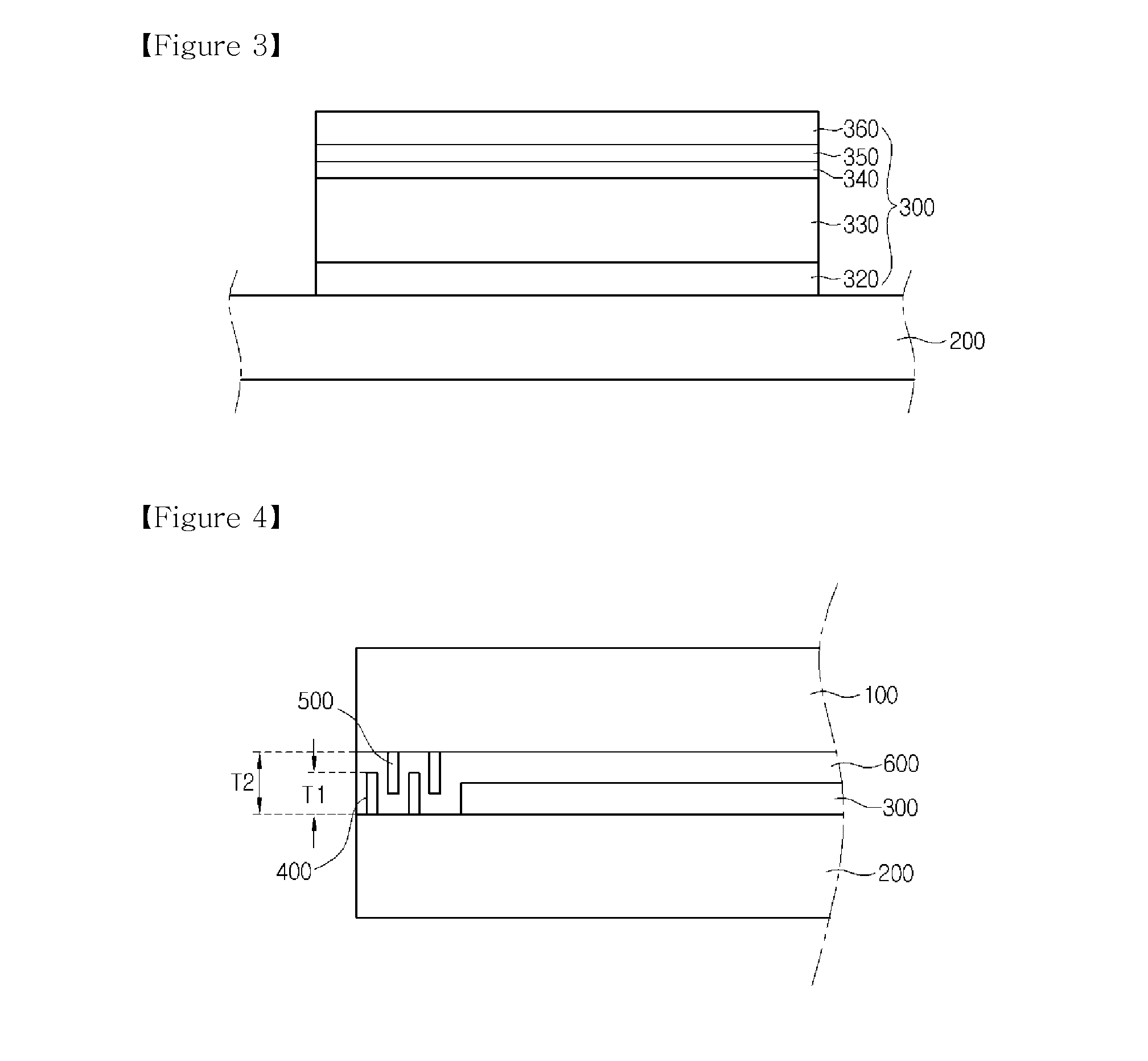Solar cell
a solar cell and cell technology, applied in the field of solar cells, can solve the problems of degrading reliability against moisture penetration and limit the adhesive force between the upper and lower substrates, and achieve the effect of improving the adhesive force and improving the reliability against moisture penetration
- Summary
- Abstract
- Description
- Claims
- Application Information
AI Technical Summary
Benefits of technology
Problems solved by technology
Method used
Image
Examples
Embodiment Construction
[0014]In the description of the embodiments, it will be understood that when each panel, wire, cell, device, surface, or pattern is referred to as being “on” or “under” another panel, wire, cell, device, surface, or pattern, it can be “directly” or “indirectly” on the other lens, unit, part, hole, protrusion, groove or layer or one or more intervening layers may also be present. Such a position of elements will be explained with reference to the drawings. The thickness and size of each layer shown in the drawings may be exaggerated, omitted or schematically drawn for the purpose of convenience or clarity. In addition, the size of elements does not utterly reflect an actual size.
[0015]FIG. 1 is a sectional view showing a solar cell according to the embodiment, FIG. 2 is a perspective view showing a lower substrate having a pattern according to the embodiment, FIG. 3 is a sectional view showing a semiconductor layer formed on a substrate according to the embodiment, FIG. 4 is a partia...
PUM
 Login to View More
Login to View More Abstract
Description
Claims
Application Information
 Login to View More
Login to View More - R&D
- Intellectual Property
- Life Sciences
- Materials
- Tech Scout
- Unparalleled Data Quality
- Higher Quality Content
- 60% Fewer Hallucinations
Browse by: Latest US Patents, China's latest patents, Technical Efficacy Thesaurus, Application Domain, Technology Topic, Popular Technical Reports.
© 2025 PatSnap. All rights reserved.Legal|Privacy policy|Modern Slavery Act Transparency Statement|Sitemap|About US| Contact US: help@patsnap.com



